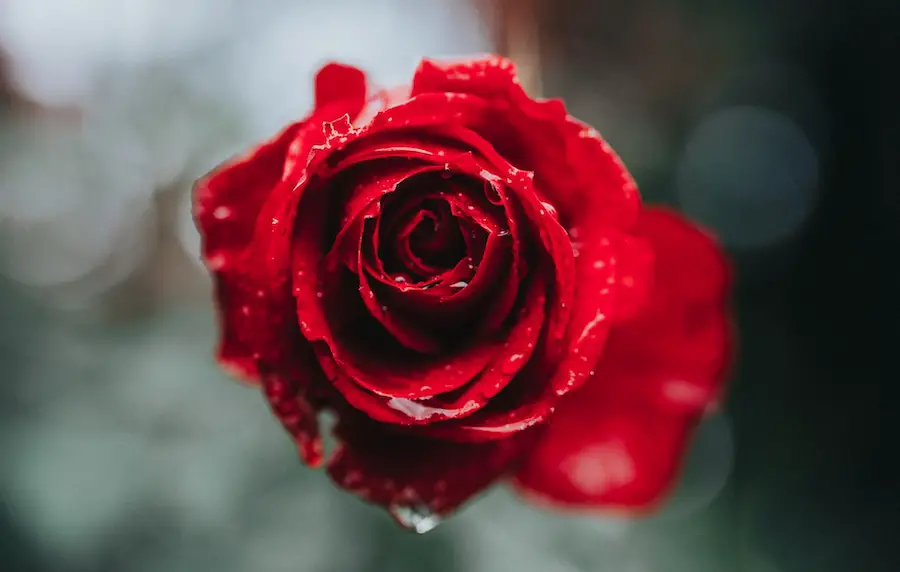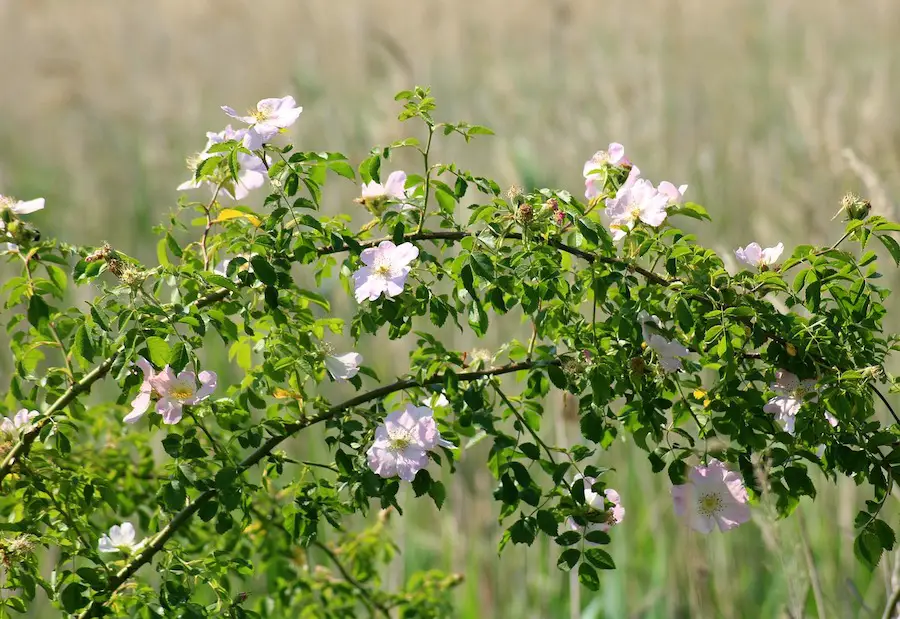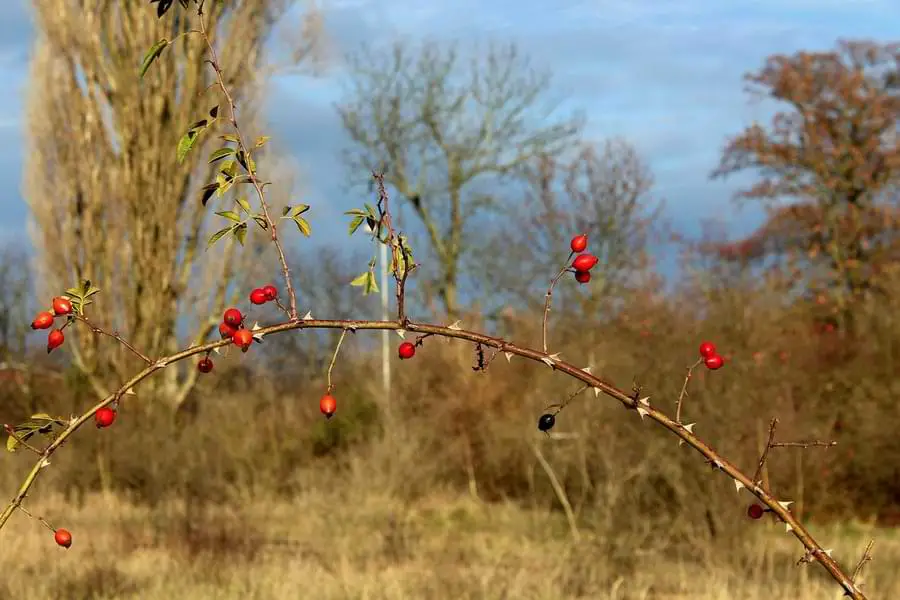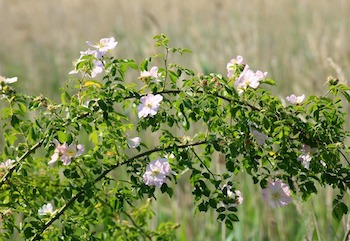Roses (genus Rosa) are beautiful and fragrant flowering plants that have captured the hearts of humans for centuries. But where do roses grow exactly…
With over 150 species and thousands of cultivars, roses are found worldwide, flourishing in diverse environments and climates. So as you can imagine, they can be found in plenty of places!
So where do roses grow? Here’s a quick starting summary…
Roses are grown on most continents, both cultivated and naturally, where there is acidic soil (6-7 pH). Roses thrive mostly in full sun, or with little partial shade, with well-drained loamy soil with added organic matter. Shrub roses are versatile in most countries and are generally hardy.
Where do roses grow?
Now that we have a brief overview, we’ll dive further into more details, covering areas where roses grow, their preferred weather conditions, and the types of soil that best support their growth.
The distribution of roses
Roses are native to various regions of the world, but they have been widely cultivated and naturalized across continents due to their ornamental and commercial value.
Historically, roses have been found in Asia, Europe, North America, and parts of Africa. Many rose species have their origins in China, where the first cultivated roses are believed to have been grown over 5000 years ago.
From there, their popularity spread along trade routes to the Middle East, Europe, and beyond.
In Asia, roses can be found in a wide range of countries, including China, India, Japan, Iran, and Turkey. In Europe, they are abundant in countries like France, Bulgaria, and England, where they have become symbols of beauty and romance. I’ve added a more in-depth list further down this article.
In North America, wild roses can be found in both the United States and Canada.
Cultivated varieties adorn gardens across the continent. Some species have also been introduced to parts of Africa and Australia.

Preferred weather conditions
The successful growth of roses depends on a combination of climate factors. Roses thrive in temperate regions, and the majority of cultivated roses prefer areas with distinct seasons. They generally require a cold dormant period in winter to stimulate their growth and flowering in the following seasons.
The ideal temperature for roses varies depending on the species and cultivar. Generally, they prefer temperatures ranging from 59 to 77°F (15 to 25°C) during the growing season.
They can tolerate higher temperatures, but extreme heat may cause stress and affect flower production.
Roses also require a good amount of sunlight to thrive. They prefer full sun exposure, which is generally taken as being at least six hours of direct sunlight per day.
Adequate sunlight is crucial for healthy growth and vibrant flower development.
In terms of precipitation, roses prefer moderate rainfall throughout the year, but they are relatively adaptable and can tolerate dry spells as well.
I should add here that proper drainage is essential to prevent waterlogged roots, which can lead to root rot and other issues …roses don’t like wet feet!
Soil requirements
The type of soil in which roses grow significantly impacts their health and vigor. They can and do grow in all types of soil, but they do have preferences!

Roses prefer well-draining soil with a slightly acidic to neutral pH range (around 6.0 to 7.0).
Sandy loam or loamy soil with a good mix of organic matter is ideal. This type of soil allows for proper root aeration, water penetration, and nutrient uptake.
Compacted or clay-based soils should be avoided, as they hinder drainage and may lead to root suffocation. However, with proper amendments and drainage improvements, roses can still grow in heavier soils.
Additionally, roses benefit from regular feeding with balanced fertilizers that provide essential nutrients, such as nitrogen, phosphorus, and potassium, to support healthy growth and abundant flowering.
Adaptability and cultivation
One of the remarkable characteristics of roses is their adaptability to various climates and conditions.
The many different species of roses and cultivars have evolved to thrive in specific regions, making them versatile and well-suited to diverse environments.
As a result, roses can be found growing in cold mountainous areas, hot arid regions, and just about everything in between.
Through centuries of cultivation and hybridization, countless rose enthusiasts have developed varieties that are more resistant to diseases, pests, and adverse weather conditions.
This has expanded the range of areas where roses can flourish, allowing gardeners and enthusiasts worldwide to enjoy these beautiful flowers.
For one thing, roses have become much more hardy. So as a result, you can now grow roses in much colder areas. Check out my article on roses that grow in cold climates.
But if you’re looking to go rose-spotting, then there are some places you are more likely to see roses naturally in the wild. And remember, the rose family has numerous varieties so you might miss some thinking they’re not part of the rose family.

Where do roses grow naturally?
Where do roses grow naturally? – Well, Roses (genus Rosa) are naturally found in various regions across the world.
Their native distribution spans multiple continents, and they have adapted to diverse ecosystems. Some of the regions where roses grow naturally include:
Asia:
China: Many wild rose species are native to China, and it is considered the birthplace of cultivated roses.
India: Wild roses are found in different parts of India.
Japan: Several native rose species are found in Japan.
Europe:
Bulgaria: Famous for its Rosa damascena, used in rose oil production.
France: Known for its historical association with roses and rose breeding.
England: Wild roses are found in the countryside, and the country has a rich rose-growing tradition.
North America:
United States: Wild roses are found in various regions, including the eastern, western, and central parts of the country.
Canada: Native rose species are present in different provinces.
Africa:
South Africa: Some wild rose species are found in the Cape region.
Middle East:
Iran: Known for its long history of rose cultivation and rosewater production.
Central Asia:
Kazakhstan
Kyrgyzstan
Uzbekistan
Middle East and North Africa:
Turkey: Home to several native rose species and has a history of rose cultivation.
South America:
Chile: Some native rose species are found in Chile.
Argentina
Australia: Some wild rose species can be found in parts of Australia.
New Zealand:
Certain rose species have been introduced and can be found in the country.
It’s important to note that roses have been cultivated and hybridized for thousands of years, and many cultivated varieties are not found in the wild.
However, wild roses still grow naturally in various ecosystems, ranging from forests, grasslands, and mountains to coastal regions and even arid areas. They exhibit remarkable adaptability, contributing to their widespread distribution and popularity across the globe.

Where do roses grow ~ More roses help 🌹
I hope this has answered the question – “Where do roses grow?”, as well as “Where do roses grow naturally”.
To sum this all up for you, roses are simply remarkable flowering plants that can be found growing in various regions of the world.
They thrive mostly in temperate climates with distinct seasons, where they can experience a cold dormant period in winter.
Roses prefer well-draining soil with a slightly acidic to neutral pH and need ample sunlight for healthy growth and flowering.
Their adaptability and versatility have led to their cultivation and naturalization in different parts of the globe.
From the ancient gardens of China to the romantic landscapes of Europe and the blooming gardens of North America, roses continue to captivate people (including me!) with their beauty and fragrance, making them one of the most beloved and cherished flowers in the world.

Hi, I’m Michael. My passion for roses was sparked a few years ago after visiting a dedicated community rose garden. So Rosehow.com represents my take, my learnings, and my help for anyone looking to grow, be proud of, and harvest roses.

